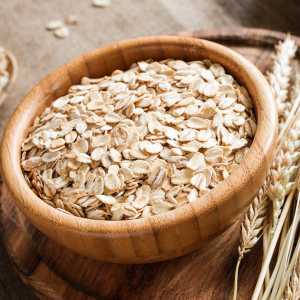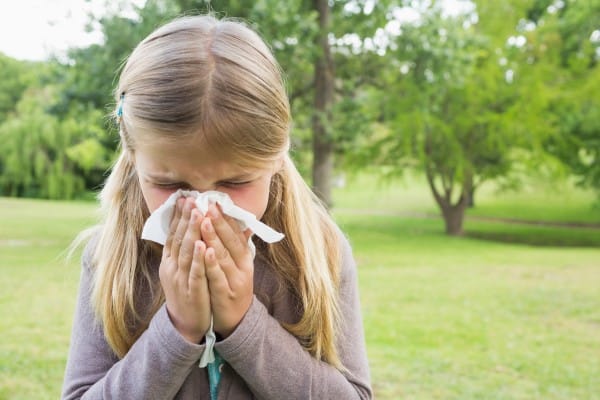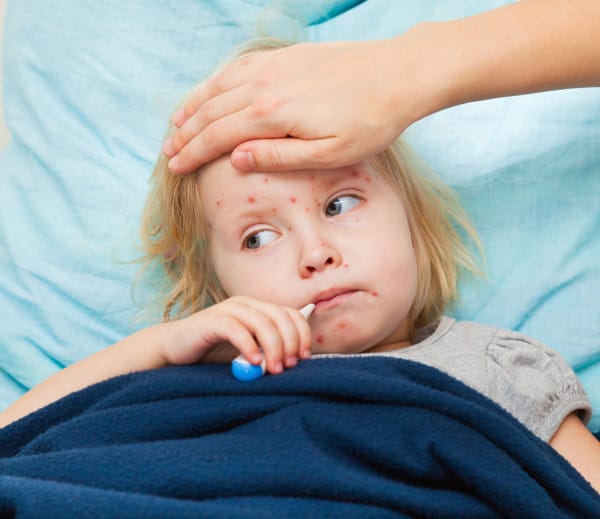Oatmeal baths are a simple, yet effective, option for soothing itchy skin at home. The gentle properties of oatmeal relieve itchiness and reduce inflammation as well as nourish, moisturize, protect, and repair the skin. Oatmeal baths are an ideal treatment for soothing the symptoms of various skin conditions including eczema, viral rashes, contact dermatitis, hives, and sunburn.
In this article, we’ll discover the science behind oatmeal baths and when to use them. I’m also including step-by-step instructions on how to prepare and use an oatmeal bath.
How Do Oatmeal Baths Work?
Oatmeal baths are made with finely ground oatmeal or whole oats that are tied into a pouch usually made with porous material like cheesecloth, muslin, or pantyhose. When the oats are soaked in hot water, a milky suspension emerges from the pouch.
This milky suspension contains a multitude of healing compounds that absorb into the skin while bathing. These compounds cleanse the skin, promote a healthy skin microbiome, reduce inflammation, improve the skin barrier, help with wound healing, and more (1-9).
Healing Properties Of Oatmeal
Oatmeal baths are like a mini pharmacy for the skin! Some amazing healing compounds are released from oatmeal and absorbed into the skin during oatmeal baths, including the following:
 Saponins – for skin cleansing (1)
Saponins – for skin cleansing (1)- Vitamin E – an important anti-inflammatory vitamin for good skin health (1,2)
- Ferulic Acid – a skin protecting antioxidant (1,3)
- Avenanthramides – a polyphenol thought to be responsible for oatmeal’s positive effect on eczema (1, 4)
- Beta Glucans – for skin protection, wound healing, and moisture (1,5)
When Should I Use Oatmeal Baths?
Oatmeal baths can be helpful for soothing pretty much any skin condition that involves inflammation, irritation, and/or dryness. In my practice, I often recommend oatmeal baths for dry skin and skin damage (7), for eczema (1, 4, 6), to soothe the discomfort of burns and sunburns (8, 9), and to help heal skin rashes, including those from chicken pox; hand, foot, & mouth disease; poison oak; allergic reactions; hives; medication side effects; etc (9). Oatmeal baths are gentle enough to be done once or twice daily while symptoms are present.
For a deeper dive into treating some of these conditions, see:
- Eczema Treatment 101 – Dr. Green Mom
- How To Soothe Sunburns Naturally – Dr. Green Mom
- An Integrative Approach To Hand-Foot-And-Mouth Disease Treatment – Dr. Green Mom
Who Shouldn’t Use Oatmeal Baths?
While oatmeal baths are safe for most people, there are certain cases where caution should be exercised or alternative options considered. Individuals with oat allergies should avoid oatmeal baths as they can trigger allergic reactions. People with gluten allergies/sensitivities can opt for gluten-free oats if they tolerate them well in their diet (perhaps try a skin patch test first to be on the safe side). Additionally, those with open wounds or severe skin infections should refrain from using oatmeal baths until the skin has healed as it may further irritate the affected areas or cause infections.
Finally, some people simply don’t find relief from oatmeal baths. In these cases, something else can be tried, such as Epsom baths.
Read about an alternative healing bath:
- Bentonite & Epsom Salt Bath For Skin Health & Detox – Dr. Green Mom
- How to Safely Prepare an Epsom Salt Bath With Essential Oils – Dr. Green Mom.
How To Prepare And Use An Oatmeal Bath
What You’ll Need:
- 1 cup of finely ground organic oatmeal
- A bathtub filled with warm water
- Highly recommended: A muslin cloth or cheesecloth for containing the oatmeal – this will save your drains!
Oatmeal Bath Instructions:
- Grind the oatmeal into a fine powder using a blender or food processor.
- Fill the bathtub with warm water – not too hot!
- Tie your oatmeal into the muslin cloth, and pop the bundle of oats into the tub.
- Soak in the oatmeal bath for 15-20 minutes – no need to rinse off after.
- Pat your skin dry with a soft towel. Avoid rubbing, as it may further irritate the skin.
- Within 3 minutes, apply a gentle and thick moisturizing cream containing botanical anti-inflammatories to seal in moisture.
Summary
Oatmeal baths are a natural and effective way to soothe itchy skin. By harnessing the gentle healing properties of oatmeal, you can alleviate inflammation and relieve itchiness as well as nourish, cleanse, and moisturize your skin.
References:
- Fowler J. F., Jr (2014). Colloidal oatmeal formulations and the treatment of atopic dermatitis. Journal of drugs in dermatology : JDD, 13(10), 1180–1185.
- Mohd Zaffarin AS, Ng SF, Ng MH, Hassan H, Alias E. Pharmacology and Pharmacokinetics of Vitamin E: Nanoformulations to Enhance Bioavailability. Int J Nanomedicine. 2020 Dec 8;15:9961-9974. doi: 10.2147/IJN.S276355. PMID: 33324057; PMCID: PMC7733471.
- Zduńska K, Dana A, Kolodziejczak A, Rotsztejn H. Antioxidant Properties of Ferulic Acid and Its Possible Application. Skin Pharmacol Physiol. 2018;31(6):332-336. doi: 10.1159/000491755. Epub 2018 Sep 20. PMID: 30235459.
- Sur, R., Nigam, A., Grote, D., Liebel, F., & Southall, M. D. (2008). Avenanthramides, polyphenols from oats, exhibit anti-inflammatory and anti-itch activity. Archives of Dermatological Research, 300(10), 569-574. https://doi.org/10.1007/s00403-008-0858-x
- Du B, Bian Z, Xu B. Skin health promotion effects of natural beta-glucan derived from cereals and microorganisms: a review. Phytother Res. 2014 Feb;28(2):159-66. doi: 10.1002/ptr.4963. Epub 2013 Mar 11. PMID: 23494974.
- Paudel D, Dhungana B, Caffe M, Krishnan P. A Review of Health-Beneficial Properties of Oats. Foods. 2021 Oct 26;10(11):2591. doi: 10.3390/foods10112591. PMID: 34828872; PMCID: PMC8625765.
- Song S, Lee YM, Lee YY, Yeum KJ. Oat (Avena sativa) Extract against Oxidative Stress-Induced Apoptosis in Human Keratinocytes. Molecules. 2021 Sep 13;26(18):5564. doi: 10.3390/molecules26185564. PMID: 34577035; PMCID: PMC8464938.
- Chung BY, Kim HB, Jung MJ, Kang SY, Kwak IS, Park CW, Kim HO. Post-Burn Pruritus. Int J Mol Sci. 2020 May 29;21(11):3880. doi: 10.3390/ijms21113880. PMID: 32485929; PMCID: PMC7313087.
- Patel Hemangi Hareshbhai. Review of herbal plants used in the treatment of skin diseases. J Pharmacogn Phytochem 2021;10(3):349-356.







